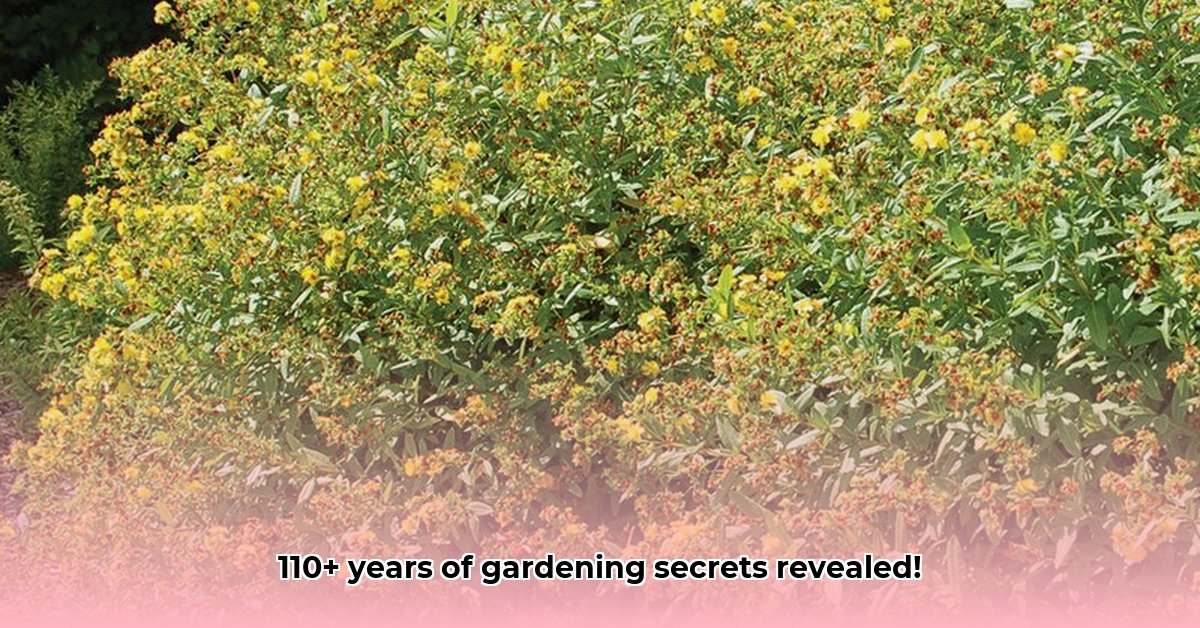
A Cookeville Legacy: More Than Just Plants
Johnson Garden Center, a Cookeville, Tennessee institution for over 110 years, stands as a testament to enduring success in a dynamic market. Operating two thriving locations, the family-run business has witnessed generational shifts in gardening trends and economic cycles. Their longevity speaks to a resilient business model, but what are the key ingredients of their recipe for success? This case study explores their history and examines the potential for Johnson Garden Center to serve as a model of sustainable agriculture. How has this long-standing business adapted to changing times, and what lessons can others learn from their remarkable journey? Is their commitment to sustainable agriculture a key factor in their long-term viability?
Sustainability: A Closer Look
While Johnson Garden Center's enduring presence suggests a commitment to environmentally conscious practices, detailed information about their specific sustainability initiatives remains limited. It's a compelling case study, particularly as a model of sustainable local agriculture. To provide a thorough and accurate depiction of their environmental impact, we must address some key unknowns.
- Water Conservation: What irrigation methods do they employ? Do they utilize water-saving techniques such as rainwater harvesting or drip irrigation? What’s their overall water footprint? Addressing this area requires further investigation.
- Pest Management: How do they manage pests and diseases? Do they primarily use organic methods or conventional pesticides? A balance of both, or a complete focus on one approach?
- Waste Management: What’s their approach to waste reduction and recycling? Do they compost green waste? What percentage of waste is diverted from landfills?
What We Know, and What We Don't
Johnson Garden Center's century-plus history provides a strong foundation to build upon. Surviving economic downturns and adapting to shifting consumer preferences highlights their adaptability and managerial acumen. However, the lack of readily accessible data about their specific sustainability practices prevents a comprehensive assessment of their environmental impact. This highlights the need for further investigation to gain a complete picture.
Uncovering the Secrets: Areas for Further Investigation
To fully analyze Johnson Garden Center's sustainability model, a detailed investigation across several key areas is necessary:
- Water Usage Efficiency: Quantify water consumption per unit area and plant type. Analyze the efficacy of current irrigation methods.
- Pest and Disease Control: Document the types of pest control methods used, quantifying organic versus conventional pesticide usage.
- Waste Management Practices: Conduct a waste audit to identify the volume and types of waste generated, recycled, and landfilled.
- Soil Health Management: Evaluate soil health using relevant metrics, such as organic matter content and nutrient levels. Analyze the implementation of practices enhancing fertility.
- Plant Selection: Analyze the mix of native, drought-tolerant, and other plant varieties to determine their environmental impact.
Growing Towards a Greener Future: Recommendations
To enhance transparency and attract environmentally conscious customers, Johnson Garden Center should prioritize proactive communication about their sustainable practices. A website overhaul clearly outlining their sustainability efforts would significantly improve their brand image.
Actionable Steps:
- Website Update: Create a dedicated section on the website detailing their sustainability initiatives, including water conservation, pest management, and waste reduction strategies. (Efficacy: Improved brand image and potential customer acquisition.)
- Sustainability Audit: Conduct a comprehensive sustainability audit to assess current practices, quantify environmental impact, and identify areas for improvement. (Efficacy: Data-driven improvement plan and identification of cost-saving measures.)
- Community Engagement: Host events educating the community about sustainable gardening practices. (Efficacy: Stronger community relations and brand building.)
Stakeholder Actions:
| Stakeholder | Action | Outcome |
|---|---|---|
| Johnson GC | Website update, Sustainability audit, implement improved practices. | Improved environmental performance, enhanced brand image, increased customer loyalty. |
| Community | Participate in educational workshops and events. | Increased awareness of sustainable practices. |
| Researchers | Conduct further research on the business model, collaborating with the business. | Publication of findings, development of best practices for other similar businesses. |
How to Measure Sustainability Practices in Small Family-Owned Nurseries: A Case Study Approach
This section focuses on quantifiable metrics for evaluating the sustainability performance of family-owned nurseries, using Johnson Garden Center as a case study example.
Key Metrics:
- Water Usage: Implement water management practices, monitor consumption levels, and quantify reductions achieved.
- Waste Management: Conduct regular waste audits to track the volume of waste generated, recycled, and disposed of in landfills.
- Sourcing Practices: Analyze supply chains to identify opportunities for purchasing locally and sustainably sourced products.
- Energy Consumption: Monitor energy usage across the facility and implement strategies to improve efficiency.
- Pest and Disease Management: Track the application of pesticides across planting cycles and target reductions through adoption of integrated pest management techniques.
- Soil Health: Regularly test soil quality to monitor organic matter content and nutrient levels.
By tracking these metrics, Johnson Garden Center, and other similar businesses, can establish a robust framework for continuously improving their sustainability performance. The combination of historical context and future-oriented strategies makes this a continuing story of success. Further research is key to understanding what exactly makes them a potential model for sustainable agriculture.